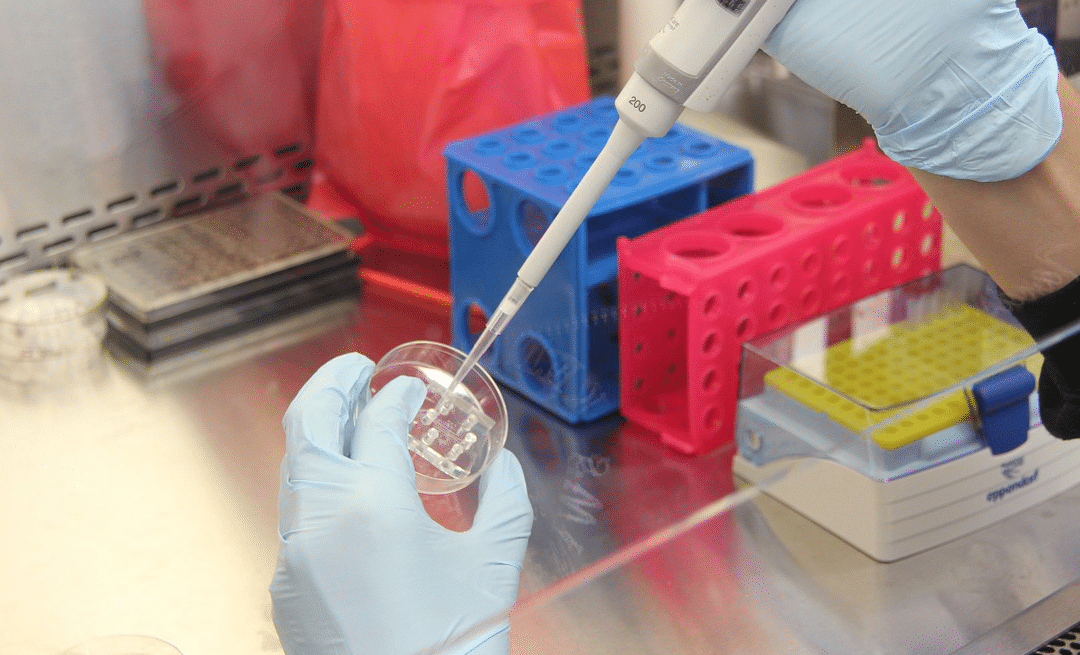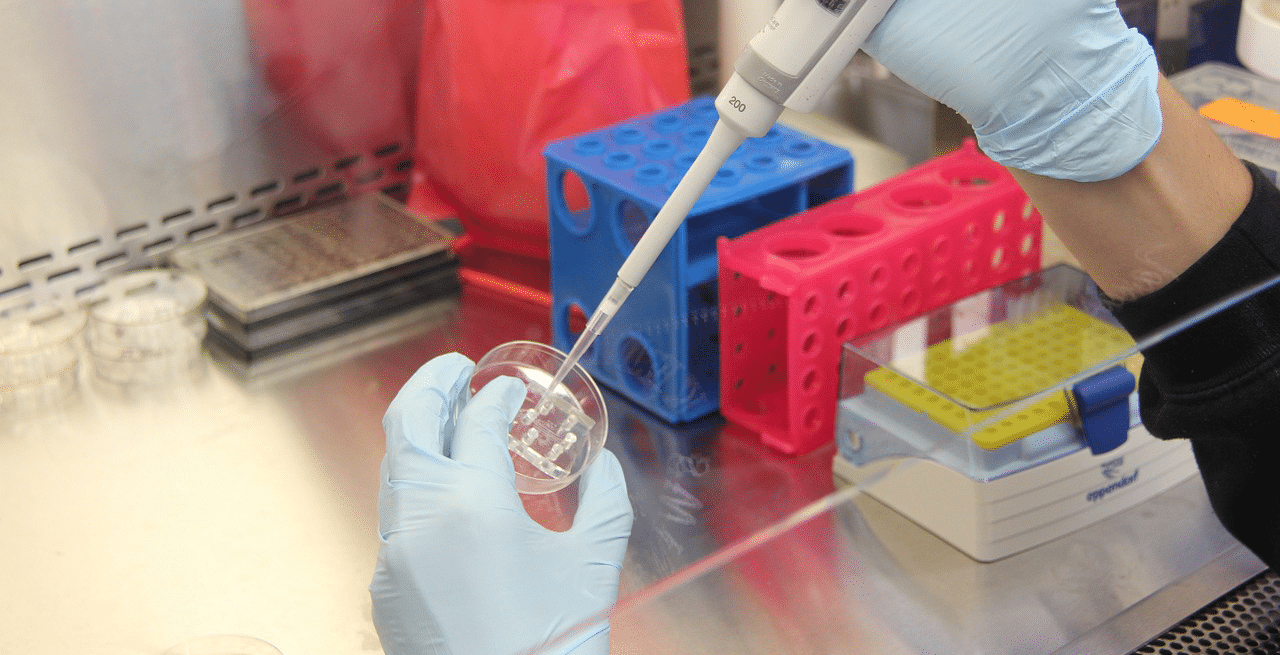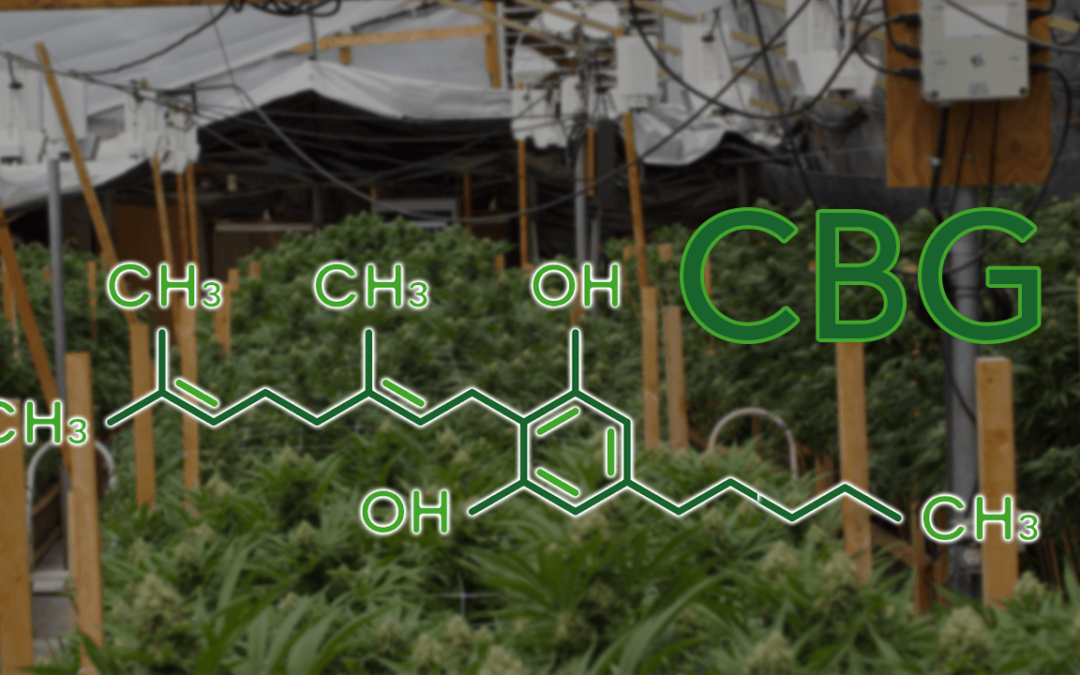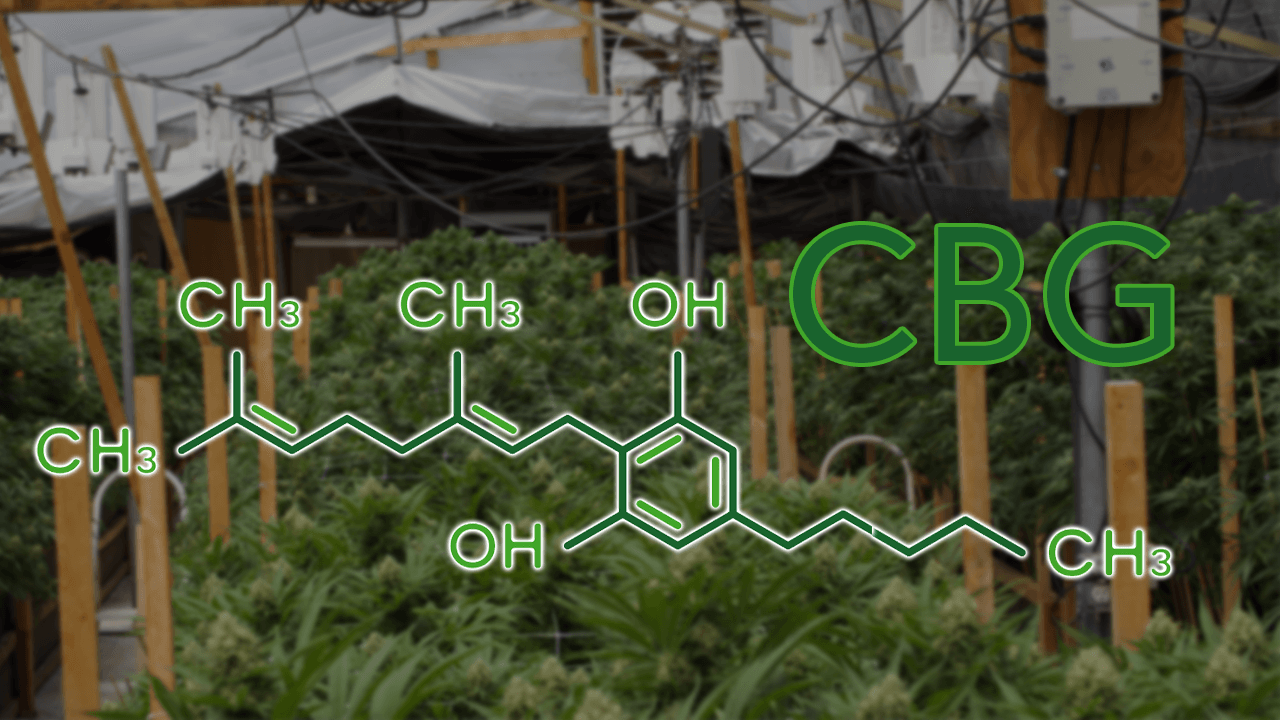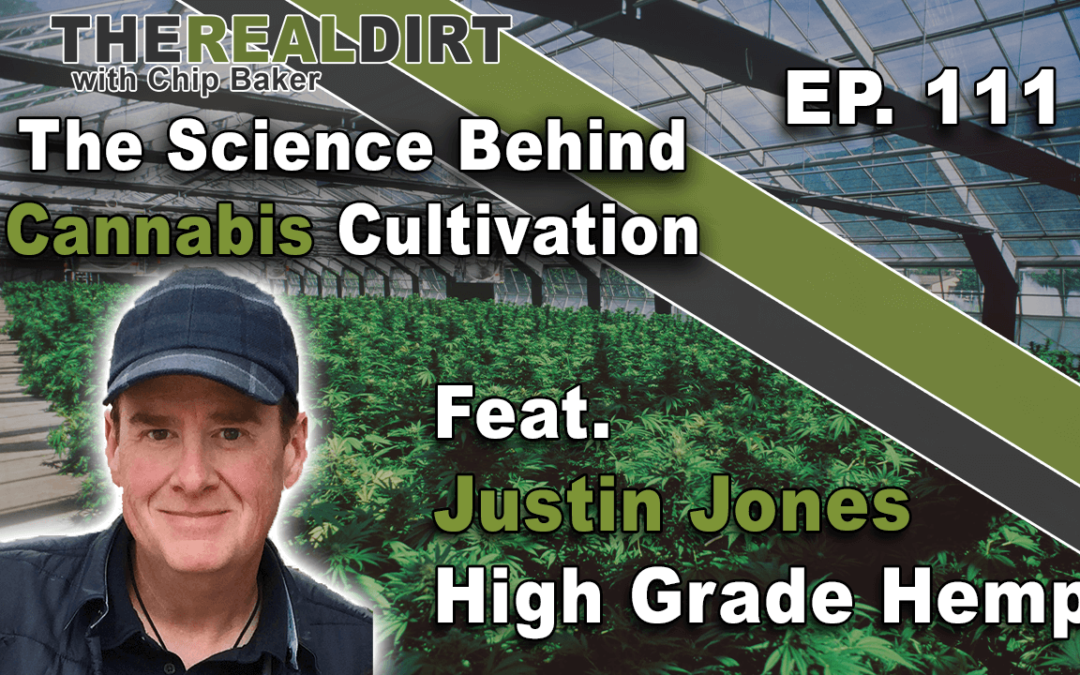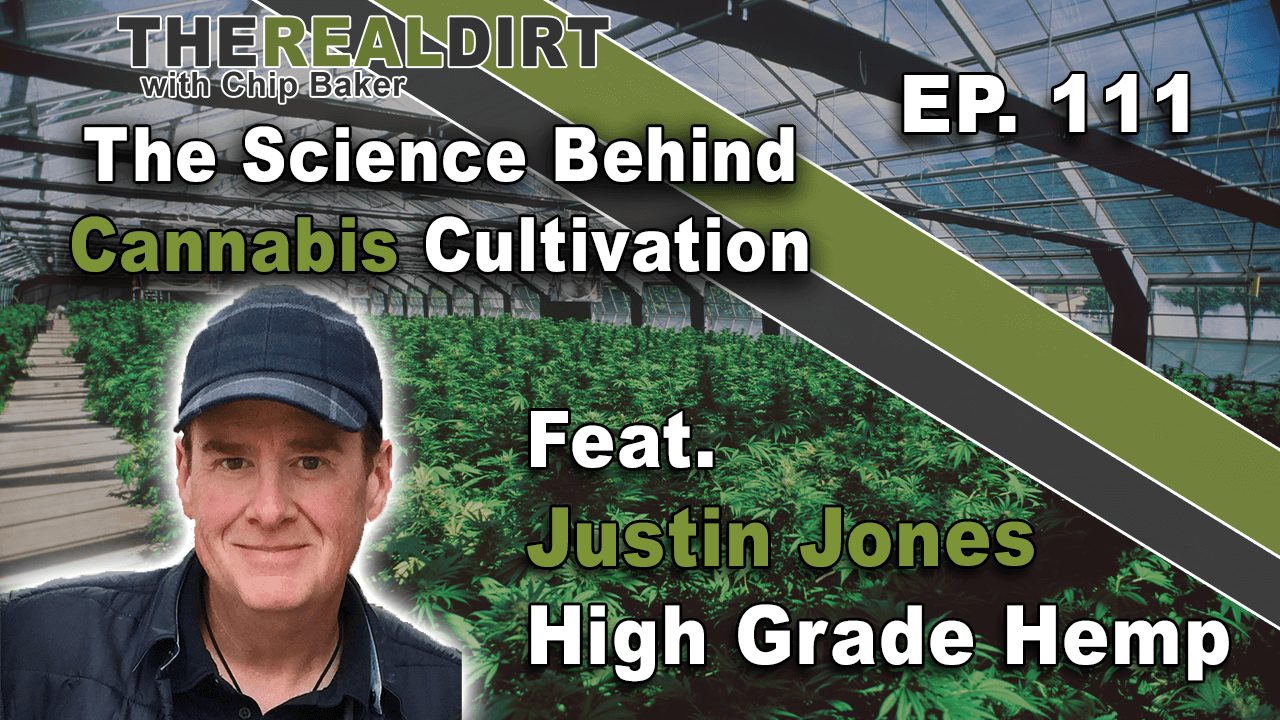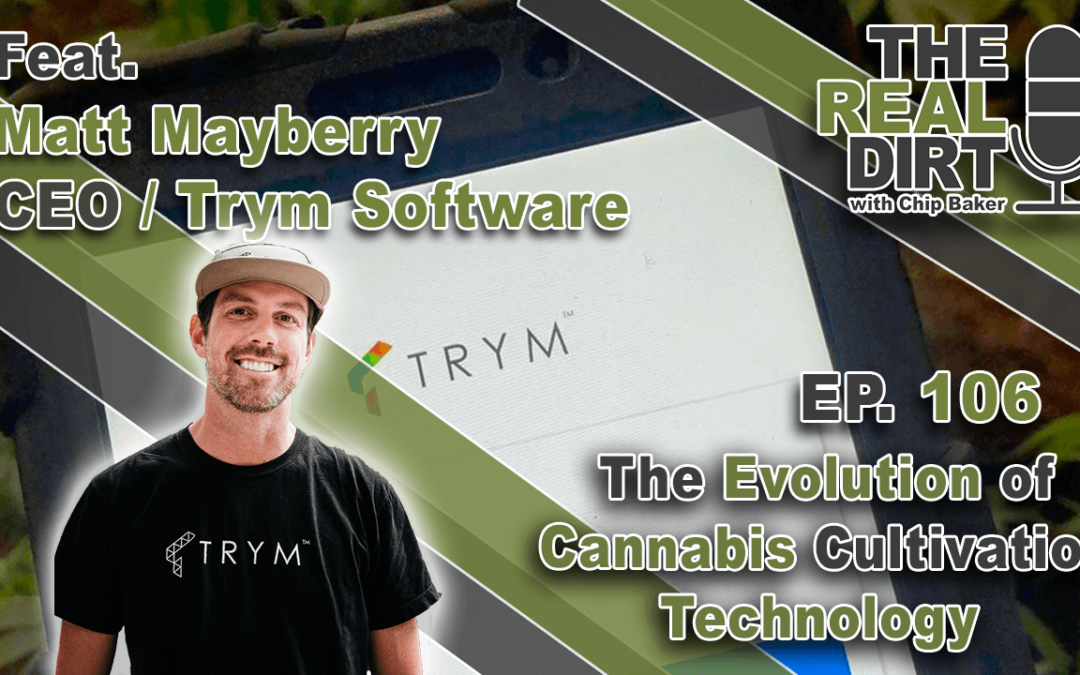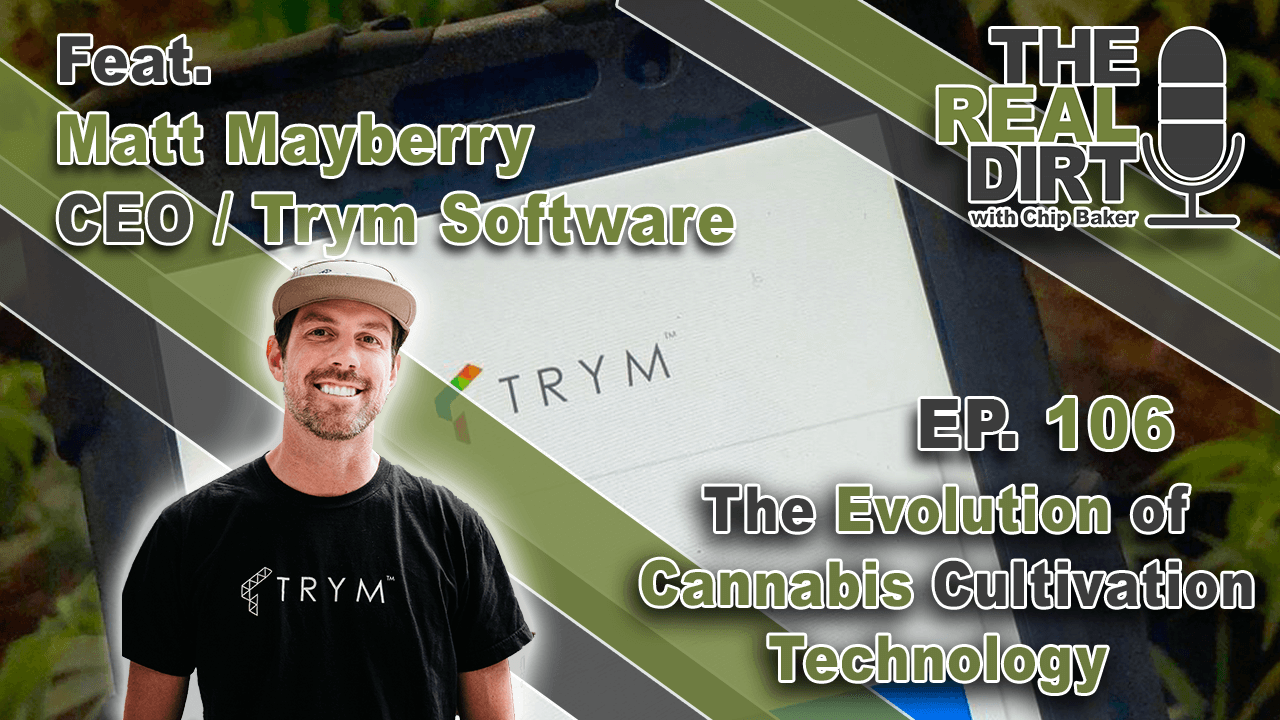Transcript
Chip: Hey! This is Chip with The Real Dirt. Thanks for joining us today. Today I’m in my newest of new podcast studios. Yes, there’s quite an echoey sound in here. And we’re going to turn this into the new Oklahoma City podcast studio. So look forward to many, many episodes here. You’re gonna have people from all over the country, and all over the world to guest here at The Real Dirt. Hey, I want to thank you for joining me today. And if you haven’t, please go to iTunes or Spotify, and subscribe to The Real Dirt podcast. Please join us on Facebook and Instagram. And, you know, if you need any hydroponic, or indoor, or outdoor growing materials, please contact us at cultivatecolorado.com, cultivateokc.com, and if you’re using soil or soilless medium, Growers Soil is what you should use. So without further ado, on today’s episode, we have Matt Mayberry. We’re going to talk about software and how it relates to the cannabis industry. So sit back, fire one up and enjoy this episode of The Real Dirt.
Chip: Hey, Matt. Chip here. How you doing?
Matt: Good. How are you?
Chip: Oh man, I’m doing great. It’s starting to be nice and fall weather over here in Oklahoma. Wait, where am I talking to you, are you in California someplace?
Matt: Yeah, we’re just north of San Francisco in Marin County.
Chip: Oh, man. I was just over there up in Humboldt. Rough fires, dude.
Matt: Oh, man. It’s crazy. Yeah, this summer, it’s definitely been a strange one. We left California actually, when the smoke got really bad here. The fires weren’t very close to [inaudible 1:48] for us so far. Well, I guess my definition of close has gotten a lot different over the last few years, but we didn’t have any, like imminent fires like that were in our town, that were, that were meaningful in any kind of way. But the smoke is really bad, so we took off the Oregon to get away from the smoke. And then the fire solid is up there basically, the smoke got really bad up there. Stayed there for a few weeks and we decided to come back down here.
Chip: Yes, right. We had a podcast scheduled and you had to postpone it, because you were fleeing from the smoke.
Matt: Yeah, it’s been a wild one. So I’m glad we finally did it. And we got this thing on the books.
Chip: Yeah, man. Thanks for joining me, man. So Matt, you know, technology is now like, and it’s starting to be so much part of everyday life. And the cannabis industry is no different. No matter if it is hemp, or ganja, or medical marijuana, we’re all using technology in and Matt, tell us a little bit about what you do.
Matt: Yeah. So I’m Matt Mayberry. I’m the cofounder and CEO of a company called Trym, and we build farm management software for commercial cannabis cultivators. And ultimately, what we do is we help growers better manage their operation, and manage their team, and then also help scale their business so they can be successful.
Chip: Yeah, you know, farm management software is something that industrial agriculture has been using. I mean, it’s probably one of the first things that happened with the computer, right? It’s to figure out how to count how many pigs or chickens that you got. But the industry really has been dominated by some major, major industrial, agricultural players. And there haven’t been too many people like yourself to want to come in, you know, to the farm management side. Man, what gave you the idea to do this?
Matt: Yeah, so I started out my journey in cannabis, I guess when I was about 17 years old in North Carolina. You know, I was smoking cannabis recreationally with my friends and –
Chip: Mothership, you were were smoking Mothership over there?
Matt: I don’t know. We did not have the quality of products that we have these days [inaudible 3:54].
Chip: So, okay, famous weed strain from from my past, Mothership.
Matt: Okay, nice.
Chip: Asheville, North Carolina.
Matt: Okay, cool. I wonder if that has a parliament funkadelic influence.
Chip: Asheville’s the center of music in the south, you know.
Matt: Oh, yeah, absolutely. Yeah, I got my first degree at Appalachian State in North Carolina, which is like about an hour away from Asheville. So, spent a lot of time in the mountains of North Carolina. But yeah, so I mean, when I was a teenager, I was riding around my friends. We were smoking cannabis, and I really enjoyed it. And I was always been, you know, I’ve got two different engineering degrees. I’ve always been kind of a tinkerer. And so that started at a very young age. So I decided to try and see if I could grow the stuff myself. Got a little bit better, go into App State, met some other growers there. When I graduated, I went into tech and I didn’t, I didn’t grow commercially. Kind of still home growing though, and I had kept my eye on the industry. I had a lot of friends that are in the industry. I still have a lot of friends that are growers, some of them from back in North Carolina. When Prop 64 passed, essentially, I started looking at the industry more seriously as a career more than just something that I did in my free time. And so, started looking at the space. And given my experience in cultivation, I say that in a very humble way, my experience in cultivation is much different than a lot of our customers. You know, I don’t grow product that looks like what our customers grow, but with my interest, and mild experience in cultivation, I decided to take a look at the space. And me and my cofounders felt really comfortable with cultivation. Benjamin, who’s one of our cofounders, actually he used to work on the commercial farm off in Mendocino. And then he was an electrical engineer at a company that he and I used to work at. And my wife, Karen is our third cofounder, and she was part of my experiments in home growing here, once we moved to California. So we all three had experience with the plant. And we started looking at when Prop 64 passed with the lens of how can we apply the experience that we have in technology, and apply it to the cultivation space. So really, we just started poking around and grows, trying to find like, what was going on at these farms, and how people were currently managing things, and seeing if there was a place to actually apply some additional technology in one way or the other, whether it was hardware or software to make their lives easier. And what we found was that as far as the record keeping went and the management of the farm went, really the most sophisticated technology was whiteboards, and Excel spreadsheets, and notebooks. And in I guess, the regulated markets that currently had that kind of compliance element as well, they had software that was provided by the state that most of the growers didn’t like. So we started thinking, you know, it looks like there’s a pretty big opportunity here, but let’s figure out what that is. And so then we just started to iterate on releasing small amounts of product and working with the farms that we had pretty good connections with, to try and see if that was something that would be valuable to them. And eventually, we ended up with a product and started selling it to people.
Chip: So you’re homegrown.
Matt: Yeah, I mean, I –
Chip: Yeah, you’re homegrown, you know. You know, I kind of put, I put people into two basic categories in the weed industry. There are the pink shirts, and there’s the homegrown, right? And the homegrown people are people who’ve been growing, you know, cannabis for themselves, you know, and the people around them were started out that way, right? They had this desire to like, “Hey, I want to help, you know, cultivate cannabis.” And the pink shirts are generally the people that want to cultivate the business of cannabis. They both intermesh and, you know, I lovingly say the term pink shirts, because several of them work with me. But like, they come from the business side, and often not from the homegrown or from the cannabis side. Now, almost every other tech person I have talked to were pink shirts. They wanted to bring some business side to it. Did you have like, a problem that you wanted to solve? You know, ’cause like, you’re looking at, you’re growing, you’re seeing what people are like, is there a number one like, oh, man, nobody’s taken advantage of nobody’s doing this.
Matt: Yeah. So what we found when we started talking to growers was that they have really a multitude of different problems that they face every day. And in order to solve those, they’re either using manual processes, or they were using multiple different pieces of software to do that. So scheduling out a batch of plants from seed all the way through to harvest. And people are using things like Google Calendar, or those like paper calendars that you buy at Staples, and they’re mapping everything out. And they’re either mounting them into grow, or they’re sharing that calendar with their employees. And then, the compliance element of it, that they were usually using their notebooks and Excel to track all the compliance reportable events, and then handing that over to a compliance manager that would then put all that into the state system, and report it to the regulators. And so the other thing was, you need to know what’s going on in your grow, you need to know what the conditions are, you need to know what happened last week. And if you don’t know what’s happening right now, if the lights go out, you need to know that. And there were people basically, putting together like, there were some people that we talked to that were putting together their own systems for like, thermal shut off where you know, if their air conditioner went out, they would turn off some of the lights. And they were kind of rigging a lot of this stuff themselves. There’s stem systems that were out there that were doing some more advanced control, somewhere out of people’s price ranges, or some just didn’t have access to those types of systems, I guess at the time. But, we just saw there were a lot of different problems that a lot of people were putting together, you know, they say innovation is born out of necessity, right? There was a lot of, kind of, micro-innovation in all of these grows, where people were solving the problems that they had. And we were able to kind of look at all those problems, and then think about, alright with our, so my background was I worked in hardware, software, and firmware. Benjamin who is our business partner has worked in hardware, software to a degree, and firmware. And Karen, our third cofounder, she is basically all things customer facing, marketing, and revenue, that kind of thing. So when we started looking at how can we apply what we know to these, we were able to look at the multitude of problems that people had and kind of figure out what that solution was. And what we saw is that there was really no software that was built specifically for cannabis cultivators. So you mentioned earlier in this call, that there’s all these systems that exist for broader ag, and that’s true. But the reality is, a lot of those systems were built for like row crops in Iowa. And farming –
Chip: Yeah sure.
Matt: 20,000 acres in Iowa is a lot different than growing like, five warehouses in Oakland. It’s –
Chip: And most of it is animal husbandry, or a lot of it, animal husbandry.
Matt: Yep, exactly. There’s a ton of that, and a lot of row crops have to, where they’re using like, satellite imagery to detect like, pathogens, or water necessities, and things like that. So, what we did is we actually took a lot of lessons from, we explored the farm management space. We looked at what a lot of those companies were doing for large scale commercial agriculture. And we looked at cannabis, and we saw kind of where the gaps were. A surprise kind of insight was we, we said, “There’s not really anything that’s specifically built for cannabis growers.” And with my experience in software, I’d seen there were restaurant softwares, and there were dental office softwares, and things like this, and everything was built, you know, with the idea that you can do everything that you need to do on a daily basis in those softwares. And so, we kind of took some lessons from those as well, and set out to build a software that would cover all of the major aspects of a cultivator’s business. And those, I kind of generically put those into three different categories. One is managing your team, the other is managing the environmental conditions, or monitoring at least the environment conditions in your facility. And then, the third is your regulatory compliance. So those are probably the three biggest challenges that people face every day. Creating groups of plants, tracking the activities that need to occur on those groups of plants, knowing what conditions they were exposed to, and then reporting all of that to the state. So that was really the problem that we set out to solve, was kind of simplifying the growers life and allowing them to really focus on what they do best, which is growing really high quality product. And ultimately growing better product as a result of not having to worry about a lot of the other nuances that affect them on a daily basis.
Chip: Yes, man, so many states like Colorado, and California, and Nevada, they’re just so complex about their tracking. And man, then there’s you know, there’s some things about California that’s really nice about their harvesting, their batching. Where Colorado, it’s like, “Wow, you got to weigh it all. You have to track it all,” like Colorado is, in my opinion, has one of the best programs, because you do have to track so much of it, but it’s not ridiculous, like maybe Nevada is. You know, it’s tough out there, man. It’s really hard for new cannabis operators or experienced operators to really keep up with it all, right? You like, literally have to have some sort of technology now. It’s not just growing plants.
Matt: Yeah, I mean, the legal market invented a new role in a cannabis cultivation facility, which is the compliance manager. You know, before regulation, there was no compliance, because there, you know, everything was –
Chip: It was like, “Oh man, is this good? This is good, bro! I like this one.”
Matt: In addition to the compliance element that comes with the regulated market, it’s also that there’s now this kind of quality expectation with brands where you put out a product and you say, you know, this is a pretty good cultivar, I’m branding it with my farm. And then, the consumer tries that, they like it, they go back to the store, they want more of it, or they get it delivered or whatever. If it’s not the same experience, then you might lose that customer. And so, there’s experience, expectation, and potency expectation, and kind of brand image all kind of encompasses all of that now. And that’s a really new thing that we really didn’t have in the legacy market. You know, it was you knew, so and so down the street had the fire Sour D, but you didn’t necessarily like, expect that every time you got that Sour D, it was gonna be the exact same or what have you. And so we’ve kind of created this machine to the industry that has also led to a lot of changes beyond just reporting to the state for compliance. It’s also like, developing standard operating procedures that are unique to different cultivars and things like that. And I think that’s a really exciting evolution, because it’s what you see in like, wine and spirits, and what you see when, you know, you look at other industries. You know, you kind of have a recognition of the brand, and you expect certain things from them.
Chip: I mean, you kind of gotta be feeling like the, when you go and talk to some of these cultivators, like you know, you’re introducing the you know, the Ford Raptor, and they’re still on the like, donkey and car type scenario, right? Because I mean, ganja farmers, they’re like, salt of the earth, right? Like, most of them, the older school ones, you know, this isn’t what they’re interested in. Do you have like, I don’t know, it’s almost a cultural like difference to be able to talk to people in that manner. Do you see that?
Matt: Yeah, I’d say it’s a mix in the industry. You know, we’ve got some growers that know they want something, but don’t know exactly what it is. And they meet with us to kind of see if we’re at, and then some cases we are, and in other cases, you know, like you said, they might say, “Well, this is not necessarily what we’re looking for.” But for the ones that get it, some of our larger customers are actually telling us what they need still. You know, we started out very much customer centric, focus on what the growers needs are and figuring out like, here’s what their problem is, here’s what the ultimate need is, let’s figure out a solution to that, working really hand in hand with them. And we still have that to this day, like, a lot of our new feature development comes directly from growers saying, you know, “This is now really important in my business, can you help me figure out how to solve this?” And as the industry evolves, our customers are evolving, and our software platform needs to evolve to keep pace with them, as well, because there are a lot of –
Chip: And do you have an example?
Matt: – the customers.
Chip: Example of one of those customer changes or customer like, developments you mean? Customer based research?
Matt: Yeah, I mean like, almost every feature in the app, I’d say. But I’ll give you a couple of examples.
Chip: So I mean, you talked heavily to people about what’s going on, this isn’t just your ideas?
Matt: We would not be anywhere without the guidance from our customers, you know. What we try to do is spend as much, I mean, ultimately, all the way down to our head of engineering, actually, right now on this call, our head of engineering is covering a customer meeting for me. And he’s meeting with a large client that we’re trying to close, and working with them to figure out how we need to make some adjustments to be able to deploy our software across their portfolio facilities that they have. So all the way down to like, the engineering level, we have people talking to our customers, because if you don’t understand the problem that the grower has, then you’re not going to be able to build software that’s going to solve that problem. And so, from our customer support to our marketing, to our engineering team, to myself, you know, we spend an immense amount of time talking to our customers. But a great example is when we first launched, we had a mobile app only. And it worked well for some of our really early customers, we had basically the ability to monitor environmental sensors like temp, humidity, co2, in the rooms. You could create groups of plants and assign them to those rooms, and then track them on the way and harvest them. And then you could also assign tasks to those groups of plants, so that your team could execute them all from the mobile app. And we started out very much mobile focused because the farms that we were working with at the scale that they were at, basically, a lot of them didn’t even [inaudible 16:56] in the facility. It had to be on mobile. So then we started working, honestly, we probably want a deal that was, we were way over our skis on and we probably shouldn’t be one, but we want it. And yeah, one day, they immediately said, “This is great. We like what you’re doing for the team. But you know, managers, we really need a web based application. And we got to be able to map things out like we do on this current calendar that we’re using. And we need to be able to plan out months or even harvests in advance.” And so working really closely with them, we built out that functionality. And now it’s probably like the most popular feature in our app is this like, that this kind of concept of task planning for your team. And I mean, literally, we just did a survey not too long ago, it was one of the more popular features that we have. So I mentioned cultivation earlier in the call. I’ve grown but I’ve never grown at the scale that these guys are growing, and I’ve never produced product that was anywhere close to it. So these guys are great. So, humility is a really important thing, being humble at what you’re good at, and recognizing where other people have expertise that you don’t have. And these growers know their craft inside and out. And you know, I think we know tech and software inside and out. But you gotta we got to listen to those that really know what they need. And that’s the way we were able to really build solid features that actually match their expectations.
Chip: I’ve said this over and over again. And it’s my number one encouragement or advice that I give people is, growing cannabis on a small scale or large scale is more about logistics and movement of materials and people, right? Like, you know, there is a certain magic and magical moment that happens when you cultivate cannabis. But especially on a commercial scale, the logistics associated with it all, you know, you have to be detail-oriented, if you want to be successful and on, and the cannabis to look the same brandable, you know, be it the same high quality, or similar every single time. It’s more than just talking to your plants, right?
Matt: Yeah, absolutely. That’s a hundred percent right. Another example of a feature that we built in collaboration with customers is actually very much in line with what you’re talking about here. So, after we built out that task calendar, we had some customers saying, you know, “I’ve got, you know, 22,000 plants that I’m managing in this cultivation facility, and I’ve got a team of, you know, 30 people that work here every day. And I have to coordinate all of them on these plants. And I have to grow these plants in the exact same way every time. So I really need a way to repeat that process for groups of plants, and be able to basically like when I create a group of plants, we already know exactly what needs to happen on it all the way through from when I initially cut the clones, and plug them all the way through when we’re harvesting and hanging. We came up with this idea of a workflow. So, a workflow is just a series of tasks that need to occur on any group of plants. And you can create as many workflows as you want. So you can have one for each strain, you could have one for for different cultivation styles. Maybe you’ve got one farm that’s greenhouse, you got another one that’s indoor, one that’s outdoor, you can have different workflows that apply to those. Or maybe you’re testing out like, rock wool and cocoa together. You can have different workflows for those. And then when you create a group of plants, you just assign this workflow, and it’ll automatically populate your calendar with all the tasks that need to happen for that group of plants. So 100% agree with you with the inventory and team management problem being one of the major things that the growers have to overcome. You know, the art of growing cannabis is in itself a full time job, you know, to really figure out exactly what your plants need, and what you need to do, and then to coordinate that across, I mean, some of these farms that we’re working with are like, measured in miles almost, right? They’re like 400,000 square feet cultivation facilities. When you’re talking about growing at that scale, you really need to have really strong processes in place in order to manage effectively. And to get the same output that you’re expecting every time. Labor is the number one operational expense, at least here in California this is true.
Chip: Everywhere, you know, and you just can’t be, some things just can’t be automated, just like the grape industry. So much of the you know, grape industry is still hand labored, still handpicked, still hand trimmed, you know, it’s a part of it.
Matt: So take that, and then imagine that you had to tag each individual grapevine with a barcode, and you had to know what grape came from each vine.
Chip: Yeah, God. Right? Yeah, I mean, this is literally, do you have a statistic on how much compliance costs and labor?
Matt: I mean, I’ve heard numbers as high as like 30% increase in labor.
Chip: Yeah, it’s 30%.
Matt: That’s coming from older markets in California, because California is still pretty new in the compliance area. But like Colorado, and Oregon, I’ve heard, it adds 30%, to just everything that we do, when it comes from, you know, planting all the way through, I mean, harvesting is probably the most laborious part of cultivating at this point, because you do have to weigh every plant. And a lot of these regulations, it’s pretty clear that whoever wrote them, either didn’t consult extensively with growers about it, or ignored grower advice, because there’s a lot of things that add a ton of additional expense to the industry. And ultimately in time, that doesn’t, in my opinion, add a lot of additional value, but.
Chip : I’ve been in on those rule defining conversations with legislators and, man, it just it, you know, they’ve got this certain perception of public safety that they need to meet. And it kind of, that trumps everything. So even though we know that cannabis as a plant is pretty much harmless, right? They have to have this like allure that they’re protecting, you know, the public from it. And that’s why you get, you know, these weird laws, right?
Matt: Yeah, I mean, I’ve seen, especially like, I’ve seen it, you know, the distance to school thing. It’s like you can, in some areas, I’ve seen schools that are down the street from a 7-11 where you can buy alcohol. Or down from, you know, a big box store where you can buy hunting rifles, but no, you can’t have them. Cannabis store or anywhere close to that where they actually have a bouncer at the door that checks your ID to make sure you can come in there. You know, it’s pretty ridiculous, some of the things that we see. But I, yeah, I get it. The public fear that started at the beginning of the 20th century in this country, and continues all the way now to this day, I think is, is one of the biggest things as an industry that we have to overcome. You know, the federal perception is one thing, and the federal legality is one thing, but the public perception is a whole another mess.
Chip: Interesting how in California has the oldest history of cannabis in the country, right? I mean, I know people were growing cannabis all over, but California’s got one of the oldest histories. And there’s all this preconceived information and leftover PTSD on both sides of the fence. And, you know, I was just there, I’m dealing with a cannabis license up in Humboldt. And you know, there’s so many concerns people have that are just leftover with historic stuff that doesn’t occur anymore, and it might not have ever occurred. But like, you know, just the like, the preconceived notion that cannabis farmers you know, don’t care about the environment, or polluters are trash, or you know, other places like say, Oklahoma where I’m at right now. I’m targetting my former city. Like, people are so open to cannabis here and they’re really interested in it in a way that like, I don’t see it in California, righ? It’s really, really strange man. You know that, you think that a state that has so much history with it and people who actively voted for it right, and you know, and smoke weed at night, or at home on the weekends. Just the conversations they have as they’re against cannabis and cannabis production because the myths you know, of system abuse.
Matt: Yeah, I mean even the county that I’m in here, there’s no storefronts where you can buy it. We have delivery services, but you know –
Chip: In Marin County?
Matt: Marin County, yeah.
Chip: Home of the Grateful Dead, right?
Matt: Yeah. Home after they got busted, right. Over selling at San Francisco and then –
Chip: Safehouse.
Matt: Yeah, we had a little stint in LA where they were manufacturing LSD and then they came back, and they all landed in Marin Country. And ultimately that’s where Jerry died since the beach but yeah, that’s where Bobby still lives. And Phil Spot and Sandra Fells.
Chip: I mean, isn’t that ridiculous? Like, I mean, The Grateful Dead really did like, define so much like street level cannabis dealing and like help, you know, find cannabis travel throughout the country, right? It’s so many. That’s the first time so many people got exposed to high end cannabis, is going to dead shows.
Matt: Yeah. True story.
Chip: Anyway, man, thank you. My cannabis licenses is in Humboldt. And they’re the hardest, it is so hard to get a cultivation license in the county of Humboldt. They’ve just regulated it, and restricted it, and zoned, it’s pretty much to death. It’s just nuts, but like used to be like, where all the weed came from, right?
Matt: Yeah, for sure. Yeah, I don’t know, it’s, it’s interesting. I’ve heard plenty of stories of people that have attempted to get licensed in California that were coming from the legacy market. That for whatever reason, you know, either they had a hard time getting a license, and they had challenges with their facility, they’ve just decided not to, some have remained in the legacy market. And others have moved to other states to try and, you know, give it a go in some of the newer markets that, depending on which market you’re talking about, in some cases, like Oklahoma’s a good example, it’s much easier to, from a licensing perspective to start an operation there that it is in California. It doesn’t necessarily mean that it’s any easier from a building a facility, and designing it, and actually running it. But you know, when it comes to licensing there, there are some newer markets that are a lot more liberal with their their kind of allocation of licenses and things like that.
Chip: You know, the limited liability, or the limited license states like Missouri, and Arkansas, and Georgia and Florida, you know, they make it a little bit different, because there’s no application process. And it’s not quite the same over there. Usually, when there’s a limited liability state, there’s no legacy people evolved into into it at all. Right, or like somebody on the board, or some other like. billion dollar group of people would come in to like, try to get a license. Because that’s what it takes, man, right? Like, it takes millions of dollars to get a license in one of those exclusive states.
Matt: It’s like that in some parts of California to where maybe not the millions of dollars, but there’s like a whole side of the industry right now, which is like license application writing, right? Where you have to, like, say the right things and portray yourself the right way in order to kind of, especially when it comes to storefront, you know, dispensers are I think especially a really coveted areas are much more challenging thing. But yeah, there’s –
Chip: In Oklahoma, one of my favorite customers is Danky McNuggets. Yeah. But when you’re writing an application, like you have to, you know, have a, it can’t be fun like that. It can’t be the Cheech and Chong show so much anymore. It’s like, “Oh, we’re growing and building a sustainable cannabis operation. And we’re gonna give back to the community and healthy harvests friendly cannabis shop,” you know, ends up being the name, right? And that’s why so many of the names are so, you can’t remember anybody’s name, right? Because they’re all like, you know, something THC related, but like, you know, Co-Op, or I don’t know, that whole weird thing that’s happened with cannabis has like, definitely decreased the culture of it all when we used to go and buy it on people’s couches.
Matt: Oh, man, I still trip out when I drive through Oakland and I see the billboards like, on the interstate. Because I’m just like, you know. Did you grow up in Oklahoma?
Chip: No, no, I grew up in Georgia. I moved to California when I was like, in my early 20s.
Matt: Alright, so I have a similar story, but grew up in North Carolina. And so like, I remember having conversations with my parents, and they were like, I was like, “This stuff’s gonna be legal there!” And they were like, “Bullshit.”
Chip: It’s federally legal now.
Matt: So but now, I’m driving down the interstate, you can you know, you see it advertised on the interstate in Oakland. And that’s just a really awesome experience, to see the evolution and, you know, we have these kind of, I guess, high-end problems now that we’re talking about, of, you know, the way that they’re regulating it. But the fact that it is regulated in a positive way is a really amazing thing.
Chip: We got to complain a little bit, you know, I mean, checks and balances of it all. And, you know, the way we of course, cannabis people win is by like, “Hey, let’s get some software to track the growth in the way to the plant all the way through. So if anybody like questions where my cannabis went, I’ve got the data that shows exactly where it went.” That’s kind of the beauty of it. That’s how we get the win, right? That’s how we get to grow. It’s like, “Oh, we just track it. Oh, sure. I’ll do that. Oh, I’ll have a fence. Oh, sure I’ll be far enough away from people.” And you know we just comply, just you know, compliance. That’s exactly what that means, is we’re not trying to fight it, right? We’re just going to comply. “Okay, whatever you want. We’ll do it,” you know, and keep getting to grow more weed.
Matt: Yep, absolutely. We’re happy to help.
Chip: So man, you get to talk to just a lot of great people, I’m sure. You’re primarily in California, but do you go other, you know, other places?
Matt: Yeah. So we’re actually in 14 different states. We focused on California, because that’s where the bulk of the team is here. And it’s really where we have probably the majority of our connections. But, you know, we do have customers in Colorado, and Oregon, and Oklahoma, and Massachusetts, Maine, Actually just recently got our first customer out in Hawaii. So yeah, we’re all over the place, Indiana, Pennsylvania.
Chip: And you work in hemp, as well as in ganja, and medical marijuana as well.
Matt: Yeah, we just recently started bringing on some hemp farms. The compliance piece is obviously not really a major factor there. But the farm management work that we’re doing is really helpful there. So it’s been interesting evolution of the product, I’d say, to see that we have customers outside of cannabis that are using us.
Chip: When you’re talking to your hemp customers. I mean, they’re more like traditional row crop farmers. Where the ganja customers, the medical cannabis customers, it’s more like a nursery style type of operation. How do you handle that with your software?
Matt: Yeah, it’s interesting. A lot of the hemp farms that we work with actually are similar to the anecdote that I gave earlier, which was a lot of growers in California that, you know, for whatever reason, were having challenges getting licensed or whatever, they move to other states to give it a go there. So a lot of the hemp farmers that we know are actually people that started out in like, medical cannabis states, and then moved to either, move back home to like Tennessee or South Carolina, or somewhere like that to start doing hemp. And the interesting thing is, I think a lot of the hemp farmers are establishing themselves in markets where they believe legalization will happen soon. And then, they’ve already got the infrastructure built up so that when licensing becomes available, they can get their cannabis license, and be ready to drop the cannabis license. So we focus mostly on high-end smokable flower hemp, because it is so similar to cannabis, aand it works really well for the software that we built out. The other aspect of the industry that’s moving towards the like, massive row crop outdoor hemp, that hasn’t really been something that we’ve addressed yet. But we do have aspirations to do that over time. Now, we just need to, I think, make some slight adjustments to be the ideal solution for that type of cultivation.
Chip: Yeah, no, I get it. It was, you know, my first thought. And yeah, this year, we just saw the industrialization of hemp, and when incurred with that, the glut in the marketplace, the development of machinery. But yeah, you know, they don’t, it’s not as regulated here as much as ganja and medical marijuana is, but you still need all the stats. You still need to know what grows where, you still need to know your water consumption, you know? So are you guys integrating any like, drone technology or satellite technology? You’ve kind of mentioned those before.
Matt: Um, no, we’re currently we’re integrated with like, environmental control systems. So things like troll master, agricultural type of aeration controls, things like that, as well as Argus controls out of Canada. Their industrial environmental control systems, we’re able to pull data in from those systems, and then represent that in our system. We’re looking at some other environmental control integrations as well. And then, obviously, we’re integrated with Metrc. And also we’re looking at some complimentary software systems now to integrate with as well.
Chip: So like, Link4 or Privo, something like that?
Matt: Yeah, those are, those are the types of companies for sure, that are on our integration list. We’re mostly indoor and greenhouse, although we do have some outdoor farms that are on the platform. There are indoor trained drones, we have not specifically started working with those yet. That plus, there’s a lot of like imagery technology that’s out there, that I think is still maturing. But, they’re using machine learning, and imagery to essentially identify like, pathogens or pests, or things like that on plants. And so, I think as the industry continues to evolve, those technologies will also evolve. And if it seems like that’s a need that our customers have, then we’ll look to integrate those types of technologies at the point where it seems like it’s sufficiently developed and would solve problems for our growers.
Chip: Yeah, absolutely, man. I mean, it seems like everything’s coming with a data port these days, you know, and sensors, you know, are soon to be on everything. I mean, I’m surprised that like, we don’t have sensors on our lights for temperature or par. And, I mean, it seems like they’re already, it’s just not too complicated to put it in there. Maybe should somebody get the idea. Hey, give me 1% for this idea, there’s a par reader on your lamp out there, send me one lamp anyway that reads par, I only need one. But you know, but you know what I’m saying? It’s like, the integration of all this is all just phase and a half. And I mean, it’s just happened with, like the GPS and satellites have just started to happen with tractors. And even though we’ve been talking about GPS and satellites for years, but it’s taken such a long time. And like, now I’m out here in Oklahoma, this turnpike they’re building. I saw this one guy was driving one tractor, and then there were other two graders right behind him that were totally empty, right? And they’re just, you know, following his GPS, you know, he’s controlling them.
Matt: Wow.
Chip: Yeah, yes. It’s totally crazy, man.
Matt: It’s a drone tractor.
Chip: Yeah, drone tactor.
Matt: That’s pretty amazing.
Chip: Yeah, the technology is everywhere, you know what I mean? The most expensive thing with cannabis is labor, like you said, to be able to automate any point. But then, you also have to, like read the data, right? Like, you know, just because you know, you’re shoving all your weed in your automatic harvesting machine, and it sorts the nuggets, and pushes the big leaf to one side, the small leaf to the other side, the eighth nuggets this way, the pound nuggets this way, you still need the data from it all.
Matt: Yeah, absolutely. I think when we started Trym, we thought it would be really great if we could Google set out the catalog the world’s data. I think, you know, you could say we set out to catalog the cannabis cultivation industry’s data, right? We didn’t actually set out to do it at the industry scale, though. We started out to do it at the grower scale, where we could actually catalog out their data, and then they can look back on it, and reflect on it, and figure out how to make improvements. Because ultimately, you and I can both be growing like you know Mac. We can both be growing a strain. And your version of Mac might be different than mine, right? Because like, we think it’s the same cut. But ultimately, it may not be, and I mean, there’s been obviously a lot of efforts to try and make, to try and identify those similarities. But knowing that I’ve seen one of my friend’s Gorilla Glue, I’ve seen the other one’s Gorilla Glue, and they look fundamentally different. It’s like, something happened along the line, and maybe [inaudible 37:01], or whatever. But also like, we don’t track everything, right? So these outside influences around like, how tight is the envelope of the room, and that kind of thing. So yeah, we have the inputs, but we don’t know every, we haven’t characterized every element of every room. So we think we’re you know, the kind of similarities across different growers make a challenge with the differences of their grow environment, the differences of their strains, make it difficult I think, to really create this whole industry wide, perfect model of what’s the best way to grow cannabis. But what we can do, I think, is provide growers along the way, as we continue to get better about how we make it really easy to track data, we can make it really easy to provide recommendations to growers on how to make improvement. Like hey, you know, normally when you run your Alien Cookies in room three, you keep it 73 degrees, and you get this output. You’re running at 75 degrees on average, you know, if we could drop that back down, then you might get x percent more output. You know, those are the types of things along the way that I think we should be able to provide, becauseyou know, you can already provide those types of assertions, and a lot of, there’s a lot of technology to provide those types of assertions in other industries. You know around like, turbine performance and around you know, broader agriculture, you know. If the field looks this color of brown from the satellite image, then you’re probably suffering from this pathogen, you know. That’s something that they can do [inaudible 38:22]. The fact that we can’t do that in cannabis is, I think, a statement to the fact that it was federally illegal. A lot of growers weren’t didn’t have the will, or the motivation to take really accurate records that were especially digital. Because you know don’t have a record what you’re doing, and with the medical, you know, there was a lot of that. So, a lot of internal nomenclature. And there’s a lot of unique cultivars that exist, and a lot of unique environments. And so, that’s been a gap to go to provide that cannabis. But that’s what we’re on the way to do, is to help growers ultimately grow a better product. And we’re doing that by tracking all those major pieces.
Chip: Oh man, that’s where it’s at. We need to grow better weed, dude. Everybody needs to grow better weed. I need better weed, you need better weed, we all need better weed. That’s for sure, man. Man, this has been an awesome conversation. A lot of people look you up. How do people find out about Trym?
Matt: Yeah, so our website is trim with a Y, so trym.io. You can go there, you can request a demo, or you could email us at info@trym.io. Love to talk to anyone that’s interested. As I mentioned, we’re in 14 states, our farm platform works in any state irrespective of the compliance system you guys use. And then, if you’re specifically looking for Metrc support in California, definitely reach out, because we, over the experience of building out that integration for compliance, have turned into industry experts as far as compliance goes in the state of California. So yeah, we’d love to have a conversation with any of your listeners that think we could be helpful.
Chip: Oh man, that’s great. Yeah, Metrc is coming to a town near you, Oklahoma. So get ready for yeah, we just passed it a couple of days ago. Not passed, but it just came into action, I believe just a couple of days ago. So it’s all starting to happen here.
Matt: That’s the truth, man. Yeah, those guys have a pretty good grip on on the regulated states.
Chip: Yeah well, here it comes. It’s all good. Hey, man. Thanks for the conversation. I really appreciate us finally getting together. It looks a little clear out there. Not so smoky. I hope the breeze keeps up, and the fire stay down.
Matt: Yeah, thank you. I really appreciate it. It’s been really nice talking to you. And yeah, hope you have a great rest of your day.
Chip: Yes, thank you. And hey, thanks for listening to another episode of The Real Dirt. This has been The Real Dirt with Chip Baker. If you’re interested in this episode or others, you can subscribe on iTunes and on Spotify. If you have any grow needs check us out at cultivatecolorado, cultivateokc.com. And remember, when life’s getting you down, just grow a little bit of weed. It’ll make you feel better. Thanks again, Real Dirt.
